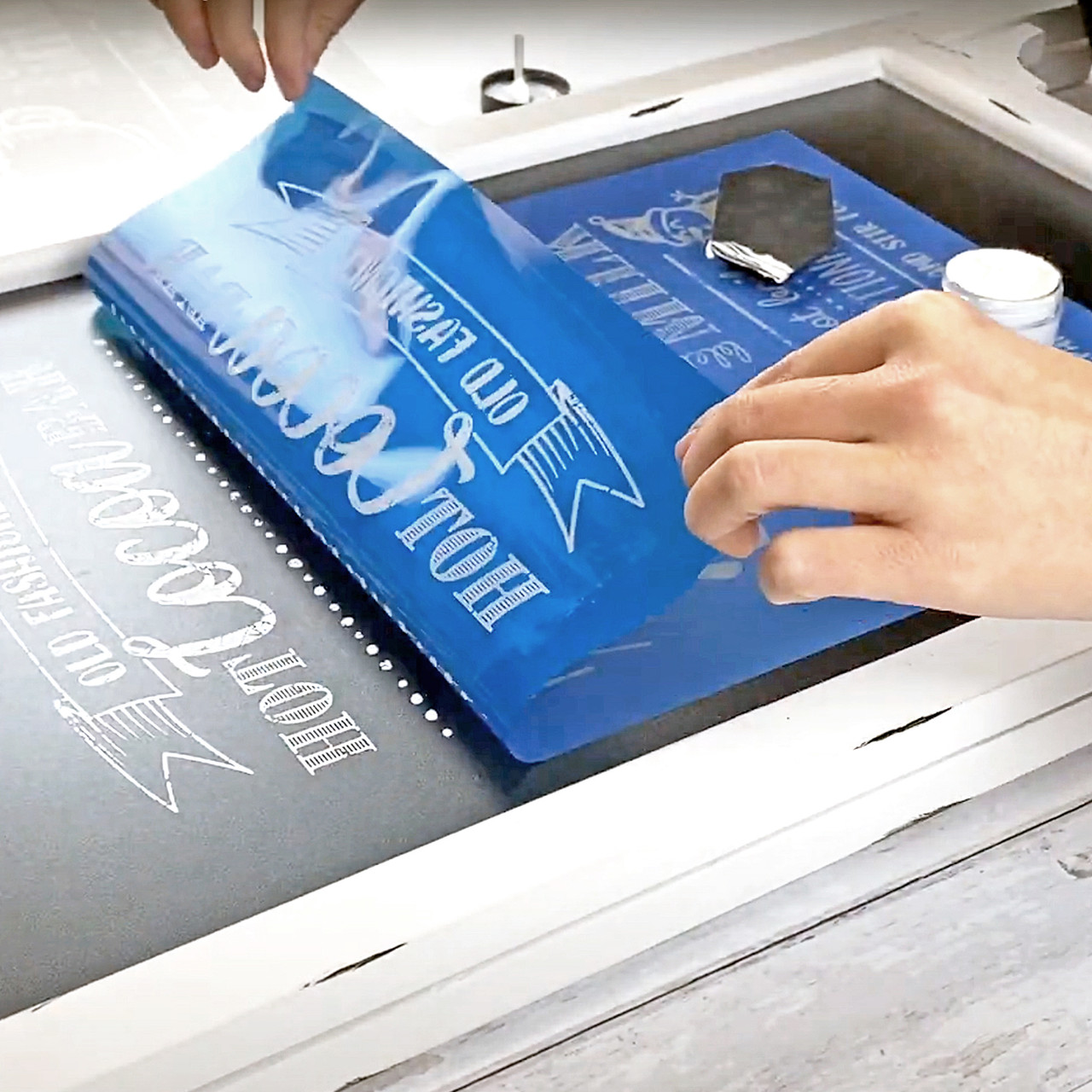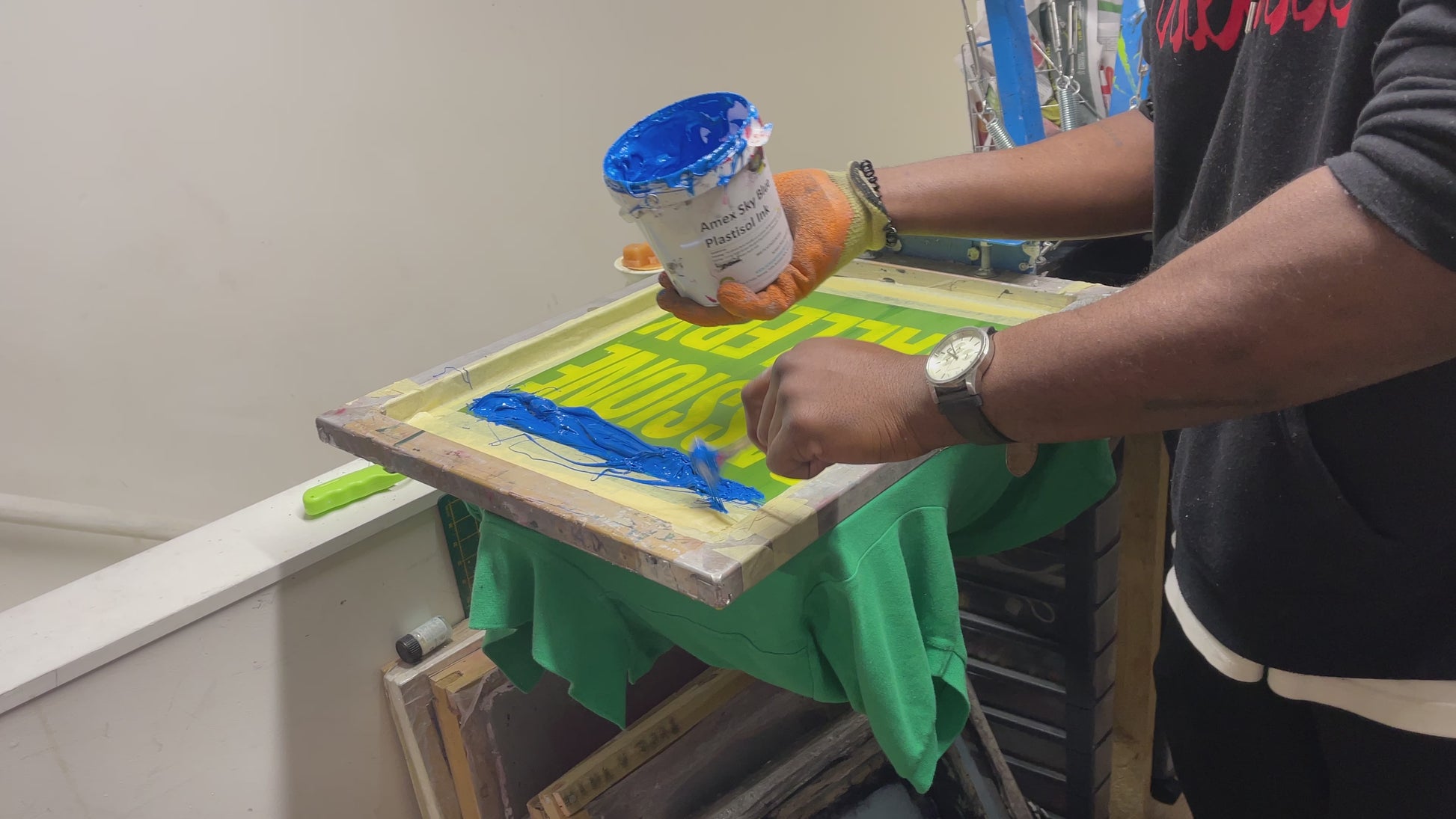Eco-Friendly Custom Screen Printing Options Available
Eco-Friendly Custom Screen Printing Options Available
Blog Article
Screen Printing Uncovered: Whatever You Need to Know Regarding Tee and Garment Printing Strategies
If you've ever before asked yourself just how those vivid layouts finish up on your preferred tee shirts, you're in the best place. Display printing is a remarkable approach that incorporates art with strategy, using unlimited possibilities for creativity. Understanding the principles, from devices to ink options, can significantly impact your outcomes. Prepared to check out the vital aspects that make screen publishing an art form? Allow's discover the details that can boost your jobs.
The Basics of Display Printing: How It Functions
When you dive into screen printing, you'll uncover it's both a science and an art. At its core, display printing involves creating a pattern, or display, that permits ink to pass through just in specific locations (screen printing kit). You start by selecting your design and preparing your screen with a light-sensitive solution. Once you reveal this emulsion to light, it solidifies, leaving your design as a negative room.
Following, you'll blend your inks and prepare your printing surface. Setting the display over the fabric, then make use of a squeegee to press ink through the screen onto the garment. This procedure calls for precision, as you want clear, lively prints. After printing, you'll cure the ink with heat, ensuring it sticks to the textile and lasts through washes. Each step is essential, and grasping them will certainly boost your display printing skills, transforming easy garments right into one-of-a-kind, meaningful pieces.
Sorts Of Display Printing Methods
As soon as you understand the essentials of screen printing, it's time to explore the different methods that can raise your styles. One preferred technique is standard display printing, where ink is pushed through a stenciled screen.
If you're going for great information, take into consideration discharge printing. This strategy eliminates color from the textile, leaving a soft, vintage appearance. Another alternative is plastisol printing, recognized for its sturdiness and vivid colors, making it a favorite for lots of brands. Lastly, try out halftone printing to create slope results and elaborate layouts. Each method has its one-of-a-kind beauty, so don't hesitate to attempt them bent on discover what fits your design best!
Important Equipment for Display Printing
To achieve spectacular outcomes in screen printing, having the ideal devices is basic. You'll require a strong screen printing frame, which holds the mesh that transfers your layout onto the garment. Next off, spend in high-grade mops; these are important for applying ink equally throughout the screen.
Choosing the Right Inks and Products
When choosing inks and products for screen printing, you require to think about the type of ink that works best for your job. Consider textile compatibility to guarantee your styles look last and fantastic long. Also, explore environmentally friendly ink alternatives to make your printing procedure extra sustainable.
Kinds of Screen Inks
Choosing the ideal screen ink is crucial for achieving vibrant, resilient prints that fulfill your job's needs. There are several kinds of screen inks to analyze. Plastisol ink is prominent for its versatility and simplicity of usage, supplying excellent shade opacity on dark materials. Water-based ink, on the other hand, uses a softer feeling and is environmentally friendly, making it optimal for those wanting to reduce their environmental effect. Release inks get rid of color from the textile, resulting in a soft, vintage look yet call for details handling. Finally, specialized inks, such as metal or glow-in-the-dark, can add distinct impacts to your layouts. Assess your task demands and pick the ink that aligns ideal with your wanted result.

Fabric Compatibility Factors To Consider
Comprehending fabric compatibility is important for attaining premium display prints, especially because different materials react distinctively to various inks. When selecting inks, think about the material type-- cotton, polyester, or blends. For cotton, water-based inks function well, providing softness and breathability. Polyester, on the various other hand, commonly needs plastisol inks for far better attachment and dynamic shades. You might require to use a mix of both types if you're printing on blends. Constantly examine your inks on example material to ensure they stick properly and keep color integrity. In addition, remember that fabric weight and appearance can affect the last result, so selecting the ideal ink and material combination is vital for your job's success.
Eco-Friendly Ink Options
Environmentally friendly inks are ending up being a prominent option for screen printers who intend to lessen their ecological influence while maintaining quality. When choosing inks, consider water-based inks, which are much less damaging and much easier to tidy up contrasted to standard solvents. These inks bond well with materials, supplying vibrant outcomes without harmful chemicals. You might additionally check out eco-solvent inks that utilize fewer volatile natural substances (VOCs), making them a safer option for both your wellness and the planet.
Additionally, try to find inks made from sustainable sources, such as soy or vegetable-based options. By picking the right inks and materials, you'll not only produce sensational designs yet additionally add to an extra sustainable printing process. Make the switch, and your prints will reflect your dedication to the environment!
Preparing Your Layout for Screen Printing

File Layout Demands
To assure your style looks lively and sharp on fabric, you'll require to pay very close attention to submit style requirements for display printing. Beginning with vector data like AI or EPS, as they can be scaled without losing top quality. If you make use of raster pictures, choose high-resolution documents, such as TIFF or PNG, preferably at 300 DPI. Avoid using JPEGs, as they can shed clearness when resized. Make certain your layout has a transparent background to avoid undesirable white sides on your prints. Maintain color settings in mind; CMYK is conventional for screen printing, so convert your RGB develops accordingly - screen printing kit. By adhering to these guidelines, you'll establish your artwork up for a successful print.
Color Splitting Up Strategies
Shade separation is an essential step in preparing your t-shirt printing style for screen printing, and mastering it can greatly enhance your print top quality. You'll need to damage your design into individual shades, as each color requires a separate screen during printing. Beginning by identifying all the shades in your style and create layers each. You can use software like Adobe Photoshop or Illustrator to isolate and different colors successfully. Be particular to save each layer as a separate file, usually in a layout like TIFF or PSD. This precision not just assures exact color representation yet additionally enhances the printing process. By focusing on color separation, you'll accomplish expert and lively lead to your screen-printed garments.
Resolution and Dimension
Achieving the ideal cause screen printing starts with assuring your style has the ideal resolution and size. Ideally, your artwork must go to the very least 300 DPI (dots per inch) for sharp, clear prints. If you utilize lower resolution, your last item could look pixelated and amateur.
When it comes to size, think about the measurements of your print area. Design your artwork to match the last print size, preferably producing it in the real measurements you'll be publishing. This way, you'll stay clear of any kind of unexpected scaling issues.
Always inspect your design in both vector and raster styles. Vector graphics can be scaled without shedding top quality, making them suitable for display printing. Preparing properly will assure your layout looks remarkable on every garment!
Step-by-Step Screen Printing Process
Screen printing is a dynamic process that enables you to create lively layouts on different surface areas. To start, you'll need a screen, solution, and your chosen ink. Initially, prepare your screen by cleansing it extensively. Next off, apply the emulsion evenly and let it completely dry in a dark location. When dry, expose your display to light with your layout positioned on it, which will solidify the emulsion where the light hits, developing a stencil - screen printing kit.
Put ink onto the display and use a squeegee to press the ink through the pattern onto the fabric. Raise the screen carefully and let the print dry. You've effectively display printed your style.
Tips for Effective Screen Printing Projects
While you're diving into your screen printing tasks, bear in mind that preparation is vital to success. Beginning by gathering all your materials-- inks, garments, displays, and mops. A clean work area assists stop unwanted errors, so clean up prior to you start.
Following, verify your artwork is high-resolution and properly sized for your garment. Evaluate your screen for proper direct exposure and clean it extensively to prevent smudges. When mixing your inks, follow the supplier's standards to attain the ideal uniformity.
During printing, apply also pressure with your squeegee for consistent results. Don't hurry; take your time to confirm each print meets your requirements. After printing, allow your garments completely dry entirely before managing or packaging them.
Finally, always keep an example of your benefit future reference. This method, you can evaluate your progress and enhance your strategies in time. Delighted printing!

Frequently Asked Concerns
How Long Does It Take to Set up a Screen Printing Work?
Setting up a display printing work generally takes about half an hour to an hour. You'll prepare the displays, mix inks, and change journalism. The moment varies based on intricacy and experience, so stay organized!
Can I Print on Different Fabric Enters Using the Exact Same Strategy?
Yes, you can publish on various fabric types utilizing the same strategy, however you'll require to adjust your inks and setups. Some textiles soak up ink in a different way, so experimenting warranties the most effective results for every product.
What Are Usual Mistakes to Prevent in Screen Printing?
When display printing, prevent typical errors like utilizing the wrong ink, overlooking correct direct exposure times, or skipping pre-press checks. Constantly evaluate your configuration and keep clean screens to assure quality results each time.
How Can I Properly Clean and Maintain My Screen Printing Tools?
To properly clean and maintain your screen printing tools, you need to consistently wash screens with suitable solvents, check squeegees for wear, and ensure all devices are saved dust-free and completely dry. Consistency improves and protects against expensive repair services efficiency.
Is Screen Printing Ecologically Pleasant Compared to Various Other Techniques?
Screen printing can be much more eco-friendly than other methods, particularly if you use water-based inks and eco-conscious materials. By selecting lasting products and techniques, you minimize waste and minimize your influence on the world.
Display Printing Uncovered: Every Little Thing You Need to Know About Tee and Garment Printing Techniques
At its core, display printing entails producing a pattern, or screen, that enables ink to pass through just in particular locations. Placement the screen over the textile, then utilize a squeegee to press ink via the display onto the garment. One prominent method is typical screen printing, where ink is pushed with a stenciled screen.When selecting inks and materials for display printing, you require to take into account the type of ink that functions best for your project.
Report this page